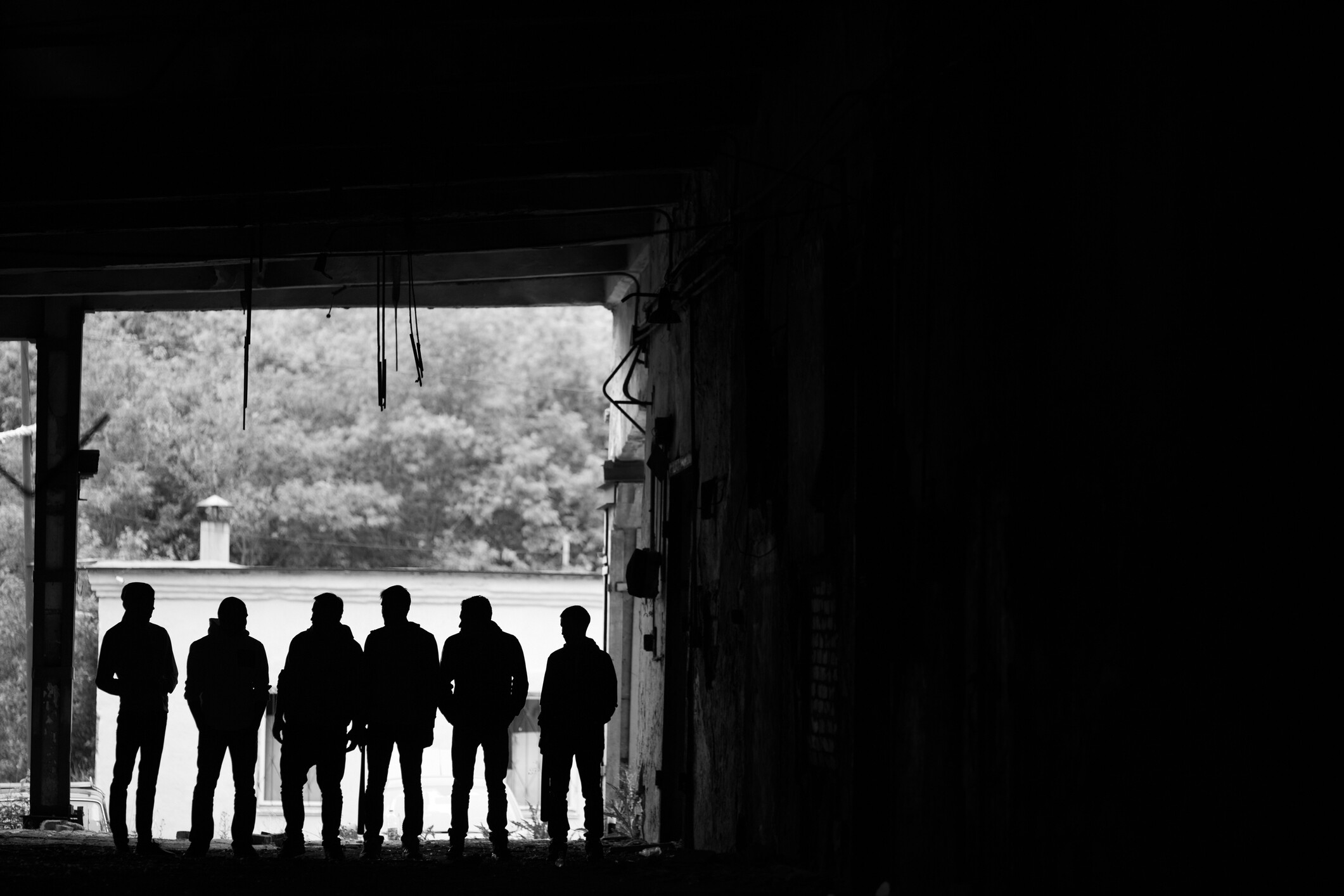
(From left) Doctoral student Hannah Yamagata, research assistant professor Kushol Gupta, and postdoctoral fellow Marshall Padilla holding 3D-printed models of nanoparticles.
(Image: Bella Ciervo)

The late 1980s and early 1990s in Los Angeles came to be known as the “decade of death.” So prevalent were the gangs, so violent their tendencies, that homicides topped 1,000 per year. In an effort to reverse the trend, the L.A. Attorney’s Office decided to take a novel approach: File civil injunctions against gangs saying that their organizations were a public nuisance.
“Typically, wrongdoing like assault and drug dealing fall under the criminal code,” says Penn criminologist Greg Ridgeway. “But the idea here was to use the civil code, like what’s used against a noisy bar or an auto repair shop leaking fluid. If you could convince the judge that the gang was a public nuisance, then the judge could issue an injunction prohibiting members of the gang from doing certain, otherwise legal activities.”
Between 1993 and 2013, Los Angeles filed 46 gang injunctions, which essentially prevented gang members from activities like consuming alcohol, carrying spray paint, being out after 10 p.m., even simply being in the same place at the same time. Ignoring or breaking the rules set forth by the injunction could lead to arrest.
The question then became, did such action actually reduce crime?
A new paper from Ridgeway, Penn criminologist John MacDonald, doctoral candidate Ruth Moyer, and the University of Chicago’s Jeffrey Grogger, says yes. Looking beyond the steep decline in overall gang violence that had started to emerge at that time, the injunctions lead directly to a 5 percent drop in total crime in the two-and-a-half years after they began, and an 18 percent reduction two-plus decades later. The researchers published their findings in the Journal of Quantitative Criminology.
This work built on research that Grogger had conducted in 2002 on the first six gang injunctions in Los Angeles and seven other cities in Los Angeles County. He found that they had successfully reduced rates of crime. During the next 20 years, 44 more were issued against gangs, encompassing a broader swath of Los Angeles.
“The injunctions covered more territory, named more people in more gangs,” Ridgeway says. “Some overlapped. Old gangs disappeared and new ones emerged, so the L.A. Attorney’s Office overlaid injunctions on top of those that already existed. Eventually, almost 25 percent of the city was part of a ‘safety zone’ area in which these named gangs couldn’t operate.”
To determine overall effectiveness of the injunctions, Ridgeway and colleagues examined quarterly crime reports from the Los Angeles Police Department between 1988 and 2014, with a focus on aggravated assault, burglary/theft from a vehicle, burglary, grand theft auto, stealing personal property (what’s called grand theft person), homicide, and robbery. They then overlaid gang injunctions from 1993 to 2013. For their short-term analysis, they looked at the two-and-a-half years before and after the start of the injunction and compared them to nearby areas without injunctions. They also examined three areas in which injunctions were started, withdrawn, and then restarted.
“Putting the injunctions in place,” Ridgeway concludes, “increased the pace at which crime declined in these areas.”
Though that sounds like positive news, this past April, a federal judge invalidated all of Los Angeles’ gang injunctions, stating that they did not give those subject to the injunctions an adequate opportunity to challenge their inclusion.
“Gang injunctions do have value. They do seem to work in neighborhoods suffering from gang violence,” Ridgeway says. “But it’s not a cure-all to address violence more generally.” To use this approach, a gang needs to be formalized enough to pass as an actual organization. That’s often not the case in other high-crime neighborhoods. “Part of the argument to the court is that this organization has a name, a culture, a membership, rules, a hierarchy,” he says. “It looks like an organization and because of that the civil laws can be applied.”
In the future, Ridgeway says he would like to look at the individuals named in the injunctions to see whether they stop offending, move away, get arrested, end up in prison, or something else altogether. In short, he wants to know why injunctions actually work.
Greg Ridgeway is an associate professor of criminology and statistics in the Department of Criminology in the School of Arts and Sciences.
John MacDonald is a professor in the Department of Criminology and the Department of Sociology in the School of Arts and Sciences.
Ruth Moyer is a doctoral student in the Department of Criminology in the School of Arts and Sciences.
Michele W. Berger

(From left) Doctoral student Hannah Yamagata, research assistant professor Kushol Gupta, and postdoctoral fellow Marshall Padilla holding 3D-printed models of nanoparticles.
(Image: Bella Ciervo)

Jin Liu, Penn’s newest economics faculty member, specializes in international trade.
nocred

nocred

nocred